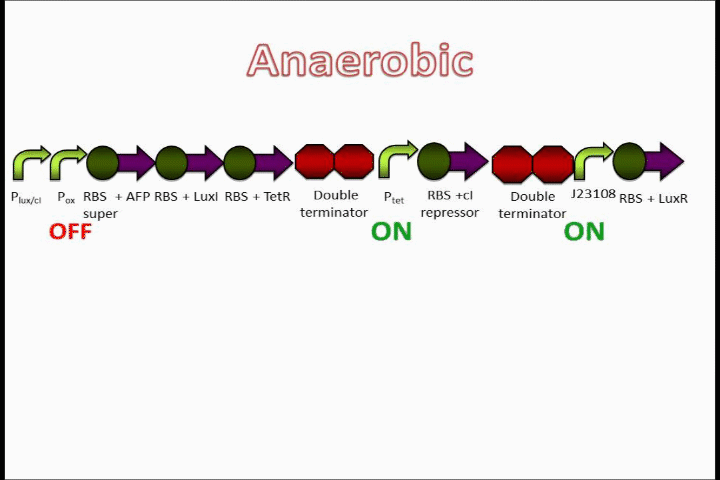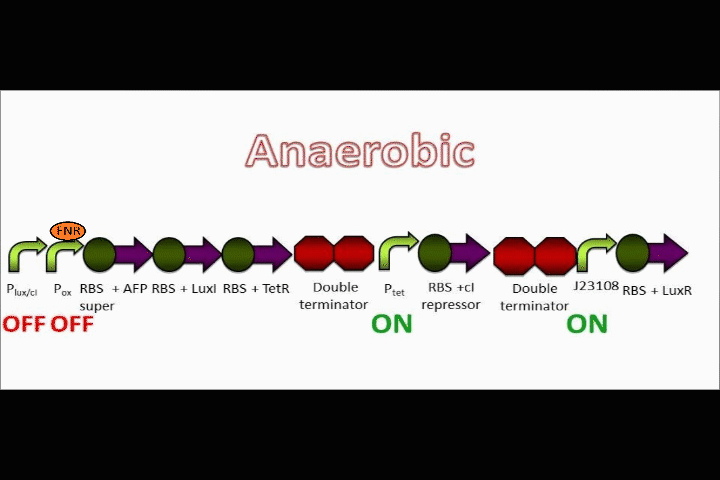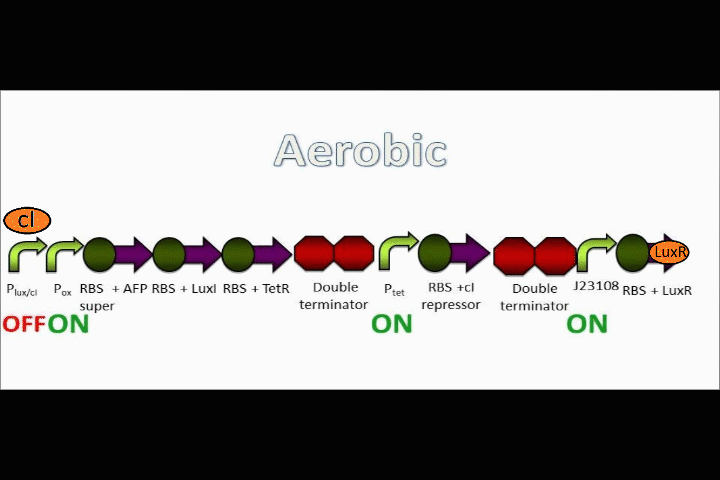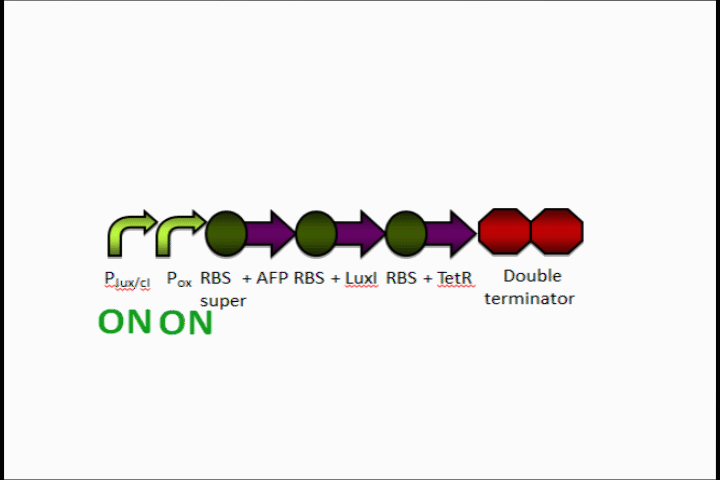Team:Penn State/Project
From 2010.igem.org
| Home | Team | Official Team Profile | Project | Parts Submitted to the Registry | Modeling | Notebook | Human Practices | Safety | Sponsors |
|---|
Contents |
Overall project
The Penn State Team will be researching and experimenting two different ideas. The first area of study will be creating an oxygen-sensing promoter. This will be done through researching the way that FNR and arcA regulate aerobic/anaerobic respiration in E. coli; engineering applications will be applied to these processes. The second topic we are working on is Bacterial Fireworks, an incorporation of quorum sensing, pigments, and cell lysis. Our goal is to assemble the necessary parts to display the spreading of color as the cells lyse. The team would like to incorporate both aspects of the project to create a bacterial fireworks display that is triggered by a lack of oxygen inside of an agar sphere.
A reliable modular lysis mechanism through quorum sensing could be used in many different fields. As engineered microorganisms are becoming more widely considered for use in the open environment, concerns are growing about possible detrimental effects these microbes could have on ecosystems if they were ever to grow and multiply past expectations. A quorum-based lysis "safety" mechanism would only require one cell to receive a predetermined signal in order to eliminate the entire rogue population, should it escape the area of its intended use.
Project Details
Genetic Circuit
The Penn State iGEM team began work and research in mid May. After learning lab techniques from the grad students, we began researching possible topics. We decided to create a cell lysis device.
Initially, we transformed Lux Promoters, Constitutive Promoters, LuxI + RBS, LuxR + RBS, Lambda Phage lysis devices, Terminators, LacI, LuxR, pLac, CI, RBS, Pigments, FP, LacI + RBS, and CI + RBS.
| Lux Promoters | Lux Promoters | Constitutive Promoters | LuxI + RBS | LuxR + RBS | Lambda Phage Lysis Device | Terminator |
|---|---|---|---|---|---|---|
| K091107 | R0061 | J23108 | C0261 | J37033 | K112022 | B0010 |
| K091146 | R0063 | J23116 | S01414 | K112808 | B1002 | |
| K145150 | R1062 | J23100 | B1006 |
| LuxR | LacI | pLac | cI | RBS | Pigment | FP | LacI + RBS | cI + RBS |
|---|---|---|---|---|---|---|---|---|
| C0062 | C0012 | R0010 | C0051 | B0033 | K274100 | RFP + RBS | J24679 | K081007 |
| B0034 | K274004 | P0451 |
Here is an overview of our genetic circuit. Below, we will take a look at the function of each individual part in detail.
Initially, our genetic circuit
cI mechanism
The Tet inverter behaves somewhat as a constitutive promoter when no promoter is in front of it. Following the Tet inverter is a cI coding sequence (which codes for the lambda repressor). The lambda repressor binds to the lux promoters in the front of the circuit, which are also lambda repressible. This, coupled with the fact that the conditions are anaerobic, provides a very strong "off" switch that does not allow the expression of the Anaerobic Fluorescent Protein (AFP) to occur.
FNR breaks apart in oxygen
FNR can act as a repressor or inducer depending on its position relative to the RBS. In nature, an activated FNR dimer represses aerobic functions while inducing anaerobic functions.
In the event that conditions change to aerobic in our circuit, oxygen molecules break up the dimer formed by FNR, causing the FNR dimer to detach from the oxygen promoter. Assuming that the oxygen promoter used in this assembly is a repressor, the end result will be that the coding sequences following the promoter will begin to be expressed.
Ptet is repressed, and the positive feedback loop is switched on
The oxygen promoter is followed by 3 protein coding sequences. Two of them are genes that code for the Tet repressor and LuxI (which produces [N-]acyl-homoserine lactone, or AHL). These two parts serve to strengthen the genetic switch once it has been turned on. The Tet repressor binds to the Tet inverter, causing the expression of the lambda repressor to be switched off. Meanwhile, AHL production resulting from the LuxI gene couples with the constitutively-expressed LuxR in order to activate the Lux promoter at the beginning of the circuit.
In addition, the Anaerobic Fluorescent Protein begins to be expressed at a high rate.
AFP expression ramps up
Because both the oxygen promoter and the Lux promoter are turned on as part of the positive feedback loop, AFP is now expressing at a very high rate. This is also bolstered by the fact that that the Super RBS is in front of this protein.
 "
"




